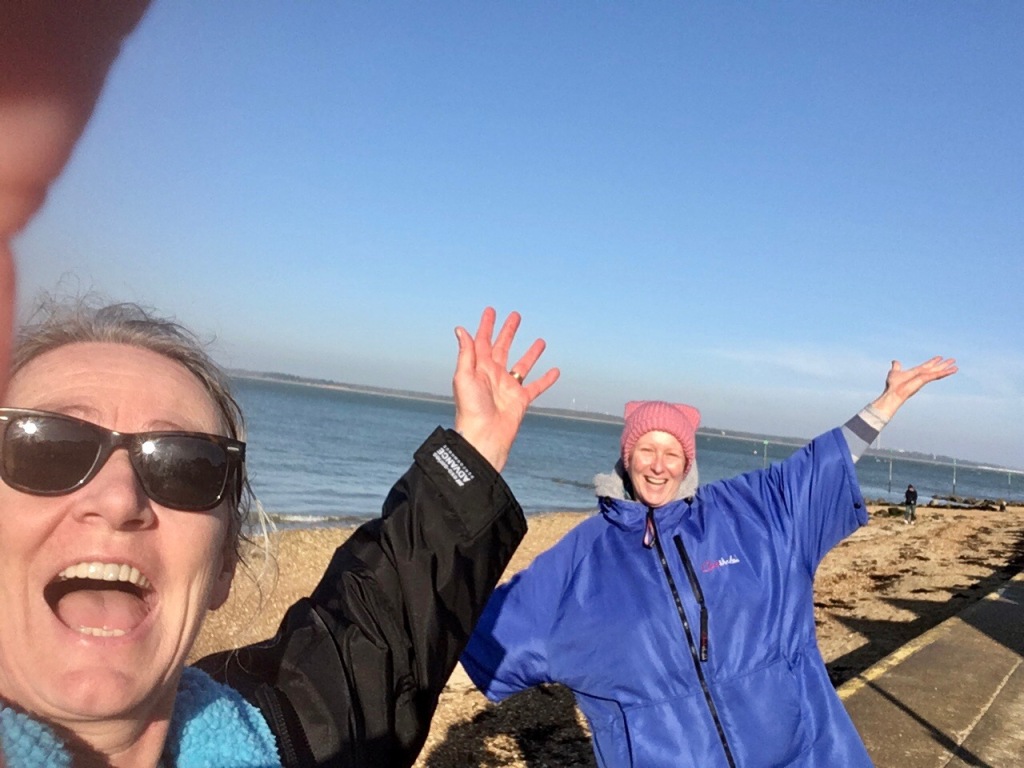It’s much discussed – to swim at a regular time first thing in the morning or to swim near or at high tide? Assuming that we are not swimming too far, and especially when swimming during the winter months, the height of water is a consideration. As a rule of thumb no matter what, we generally swim against the tide in the out direction so that we can float back like happy sea otters on the return leg.
(Now I have to own up here that as Solent swimmers we are blessed with ‘longer’, or some say double, high tides. Due to the shape of the Isle of Wight and the smaller channel on the North West of the island along the shores of the New Forest, (narrower than the stretch of water north of Ryde / south of Portsmouth) the flow of the tide gets restricted and held. This along with the position of the Island in the English Channel and the flow of tides along the south coast, means that we end up with ‘four tides’. The tidal pattern gives both ‘the stand’ of water at high tides but also… strong tidal flows.)
Enough of the technical.
Low tide at Gurnard means much stumbling and toe stubbing on small rocks and very large pebbles. A sandy beach it is not. I have often suggested that we could come and clear the boulders one low spring tide, but maybe that’s taking things a bit far. Many swimmers comment on hitting the large boulders just off the beach at low tide. We’ve certainly found ourselves suddenly whooping with surprise at the not so gentle caress of the rocks during a swim – even though we have identified they line up with the left hand end of the hand railing (as you look at the shore from the sea) and the line of green poles that runs parallel to the shore. They still come as a little surprise when bumped!
We choose to wear cheap beach shoes to give us some sort of protection from the stones and help with the pain as we stumble in at low tide but many swimmers don’t. Hats off to the hopping swimmers with feet of steel. I’d also like to point out that I highly recommend the use of a pair of old Crocs that slip on over a pair of wetsuit socks that can be left at the water’s edge. This is despite a certain individual telling me repeatedly that the holes in the sides of these shoes is where all of my dignity flows out….
All this however seems a distant thought when swimming at high tide and it is a glorious plop straight into the water. No falling over on the rocky shore, no painful tottering. It feels almost luxurious. How is it that we are always so impressed how much water there is? Swimming feels easier with a full tide.

And hence we discuss the pros and cons of swimming at the ‘regular time’ or swimming with the tide timetables. We always check the tide times whatever and the BBC site is a good source for ease of reading. In the end we’ve tended to stick to a set time for daily swimming. It has meant that it becomes part of our natural routine each day. It does mean we have stumbling days involving much swearing and declarations that we’ll only swim at high tide but then thankfully the tides continue to change and we find ourselves back at high tide swimming before we’ve had a chance to alter things.
Who’d have thought that throwing ourselves into freezing cold water would be such a regular daily occurrence, whatever the weather or tide? Wether you swim with the height of tide in mind or at a regular hour each time, it is, as we all know, the act of getting in the water that matters. Stones or otherwise.

